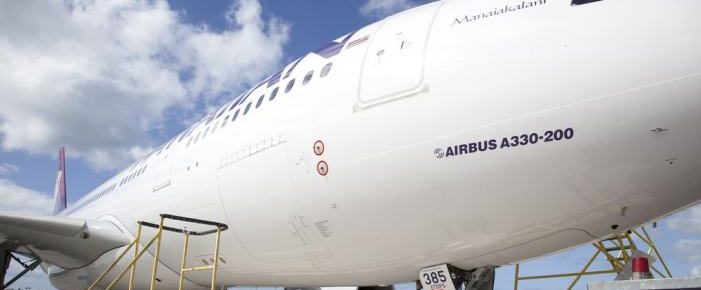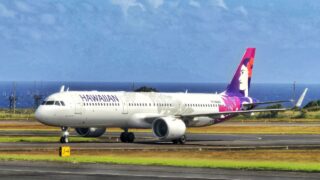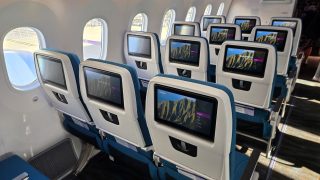On Thursday, Hawaiian Airlines Flight 26, between Honolulu and Portland, had an onboard fire on its journey across the Pacific. The scary incident, caused by a passenger’s iPad battery, created smoke in the cabin of the Airbus A330. When the flight landed at 8:45 p.m., it was met by an emergency response team. This followed other recent lithium-ion battery fire concerns on airplanes.
Hawaiian Flight 26 battery fire incident details.
The Federal Aviation Administration (FAA) confirmed that the flight crew reported the battery fire during the flight. Upon landing, Portland Airport Fire and Rescue responded swiftly, ensuring the overheating battery was safely “contained” after being “identified.” The entire situation was managed without injuries or any further complications, highlighting the effectiveness of Hawaiian Airlines crew training and emergency response procedures.
A recent trend of lithium battery fires.
This Hawaiian Airlines incident follows another case in July when an American Airlines flight boarding in San Francisco was evacuated after a laptop fire was detected in a passenger’s bag. In that incident, the crew also acted quickly to contain the fire, and no injuries were reported aboard the yet-to-depart aircraft. There were also incidents this year on Southwest, Breeze and other airlines. These incidents speak to the dangers of lithium battery fires on planes as more travelers carry them, creating a growing safety concern within the airline industry.
The average airline passenger brings four rechargeable devices onboard.
According to a report by Underwriters Laboratories, lithium-ion battery incidents have reached their highest point in five years, with an average of two thermal runaway incidents occurring each week. The study also found that nearly 87% of these incidents occur in the cabin, often in and around passengers’ seats. E-cigarettes accounted for 35% of reported incidents on passenger flights in 2023, followed by power banks, which represented another 16%. Fortunately, most incidents are handled before reaching “thermal runaway.” UL said that “Most (85%) incidents in 2023 were addressed when batteries showed warning signs such as overheating and smoking.”
FAA battery safety guidelines for airline travelers.
Given the rise in airline incidents, the FAA emphasizes several safety precautions for passengers flying with lithium-ion batteries:
- Always keep electronic devices and batteries near you in the cabin rather than in checked luggage, enabling quick access during potential emergencies.
- Be attentive and notify the flight crew immediately if a battery or device shows signs of excess heat, expansion, smoking, or burning.
- Avoid leaving devices unattended while charging, and regularly inspect batteries for any signs of damage.
These measures may help prevent dangerous situations. Flight crews are trained to manage battery fires quickly using thermal containment bags and other safety measures. Details on Hawaiian Airlines’ specific measures to contain this week’s onboard fire are not yet available.
Importance of awareness and safety training.
The incident on Hawaiian Airlines Flight 26 reminds us of the importance of awareness and proper handling of lithium-ion battery powered devices by passengers and airline flight crews. The quick and efficient response by the Hawaiian Airlines crew ensured the safety of all onboard. Kudos.
The aviation industry and the FAA are said to be considering implementing further safety measures to protect passengers. This Hawaiian Airlines is too-close-to-home reminder of the potential risks of flying with electronic devices.
We welcome your input!
Get Breaking Hawaii Travel News







Is Hawaii becoming too touristy, and how is this impacting the local culture and environment? Are there any efforts being made to preserve the authenticity of Hawaii amidst the influx of visitors?”
Which has exactly what to do with the original story about an electronic device fire onboard an aircraft? At least try to stay on topic.
I watched a neighbor’s home burn to the ground because of a liquid lithium battery fire. Generally, for one reason or another you can over charge the liquid lithium in the battery and cause the case to crack. The moment the liquid comes in contact with the oxygen in our air, you get a fire/explosion and that kind of chemical fire is hard to put out. IMO, they should not allow liquid batteries to be charged on aircraft. There’s a new dry cell battery coming on the market and that solves the liquid battery fire problem. You should only charge your device with the cable it came with.
If you fly with an airline you may have an unknown passenger named (AI) artificial intelligence.
Sorry but the airlines only asked for this. Everything is done online over a cell phone etc. How can someone not carry a cellphone if their flight is canceled or someone has a problem and has to book again. App,App,App everything is done over an app. Free Wi-Fi on flights only allows passengers to carry more lithium powered devices. These batteries are sensitive to differences in air pressures so they may react totally different at 35,000 feet. Electronics are all tested and pass UL tests at ground level. Why do you think parcel carriers only ship lithium batteries ground service trucks only.
If it helps, you don’t have to own any electronics… if you’re going to blame the airlines, you might as well blame apple, android, etc as well.
Computer and phone manufactures only create their own bloatware not the apps. Companies force consumers to use the app . I guess the consumer wasn’t forced to purchase the device in the first place. Just saying everything is done over the internet anymore.
Two questions please:
Fire proof bags are available on brand A; worthwhile for carry on?
Bad as fires in passenger compartment are, seems that checked baggage is far more dangerous; is this being checked before loading (if not, wouldn’t this rival the MCAST risks?).
Mahalo
Interesting problem that FAA suggestion overlooks. Laptop, phone, “Life Alert”, etc batteries are, in many cases, completely sealed in by their appliance case and not “inspectable” by the user. Are we headed for “No Batteries” rule (How do you think smart-phone owners will react to that?) or “Personal Fire Containment” case for all personal devices?
Airlines ask if you have any “spare” lithium batteries in your checked luggage. I think many people have no idea that they are putting lithium battery based items in their checked luggage. For example, electric shavers, electric toothbrushes and other small appliances. Although, these items have small lithium batteries as compared to spare lithium batteries or computers / tablets, the simple question is can these items cause a fire? Also, if an IPad or Tablet is in someone’s checked luggage, how can the airlines monitor this? This sounds like a risk that may not be getting properly adressed. Thoughts?
Most electric razors today are STILL made with NiCd (Nickel Cadmium) batteries inside so an electric razor and a lot of other small personal hygiene products will not be a part of the problem. By the way, the equipment that TSA uses down in the baggage screening area can and does remove items that are deemed unacceptable to fly.
How was the ‘fire’ contained?
Which airlines carry the equipment? Because having the equipment on board is not a FAA mandate.
No longer safe to allow any devices to be plugged in and charging while flying.
Just like smoking used to be allowed and is now blocked, charging must be made illegal with hefty penalties.
Seriously!? A lithium battery does not even have to be charging to go into thermal runaway. Feel free to leave your own electronics at home while you cower in fear about possible problems with everyone elses stuff!